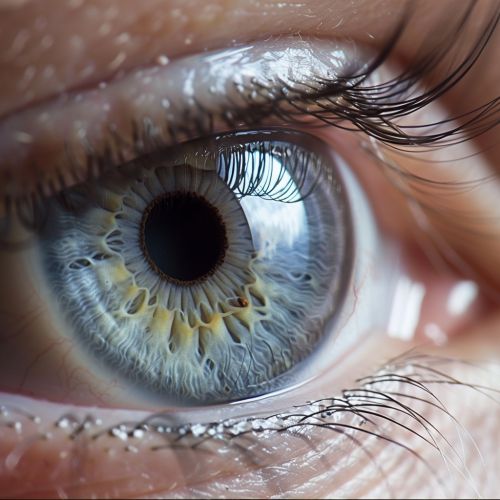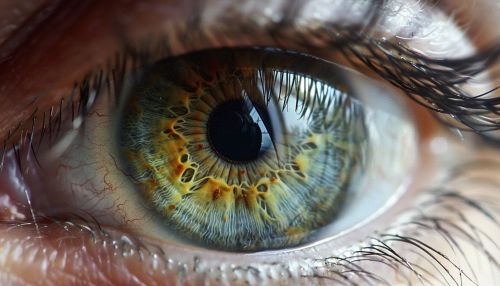Cornea
Anatomy of the Cornea
The human eye is a complex organ, and one of its most crucial components is the cornea. The cornea is a clear, dome-shaped surface that covers the front of the eye. It acts as the eye's outermost lens, controlling and focusing the entry of light into the eye.


The cornea is composed of five layers, each with its unique function. These layers, from the outermost to the innermost, are the epithelium, Bowman's layer, the stroma, Descemet's membrane, and the endothelium.
Epithelium
The epithelium is the cornea's outermost layer and serves as a barrier against dust, debris, and bacteria. It also absorbs oxygen and nutrients from tears and the aqueous humor, the clear fluid in the front of the eye.
Bowman's Layer
Beneath the epithelium is Bowman's layer. It is a transparent sheet of tissue composed of protein fibers called collagen. While it is tough and resistant to injury, if it gets damaged, it can form a scar as it does not regenerate.
Stroma
The stroma, which comprises about 90% of the cornea's thickness, is found beneath Bowman's layer. It consists mainly of water and collagen, and its unique arrangement of collagen fibers prevents scattering of light and allows it to be transparent.
Descemet's Membrane
Descemet's membrane is a thin but strong sheet of tissue that serves as a protective barrier against infection and injuries. It can regenerate quickly after injury, making it essential for corneal health.
Endothelium
The endothelium is the innermost layer of the cornea. Its primary function is to pump excess water out of the stroma. Without this function, the stroma would become waterlogged, resulting in a swollen and opaque cornea.
Functions of the Cornea
The cornea plays several vital roles in vision. Its transparent nature and curved shape help to bend or refract light rays that enter the eye, contributing to the eye's overall optical power. The cornea also serves as a powerful protective barrier against dirt, germs, and other particles that can harm the eye.
Corneal Conditions and Diseases
Several conditions and diseases can affect the cornea, leading to vision problems or loss. These include corneal abrasions, corneal dystrophies, keratitis, keratoconus, and corneal ulcers.
Corneal Abrasions
Corneal abrasions are scratches or scrapes on the cornea's surface, often caused by foreign bodies like dust or sand. They can cause pain, redness, and sensitivity to light.
Corneal Dystrophies
Corneal dystrophies are a group of genetic eye disorders in which abnormal material accumulates in the cornea. These conditions can cause vision loss and may require a corneal transplant for treatment.
Keratitis
Keratitis is the inflammation of the cornea, often caused by infections or injuries. Symptoms can include redness, pain, excessive tearing, and impaired vision.
Keratoconus
Keratoconus is a progressive eye disease in which the cornea thins and bulges into a cone-like shape. This distortion can cause blurred vision and light sensitivity.
Corneal Ulcers
Corneal ulcers are open sores on the cornea, often caused by infections. They can cause severe pain and vision loss.
Corneal Treatments
Treatment for corneal conditions depends on the specific disease and its severity. Options can range from eye drops and ointments to surgical procedures like corneal transplants.
